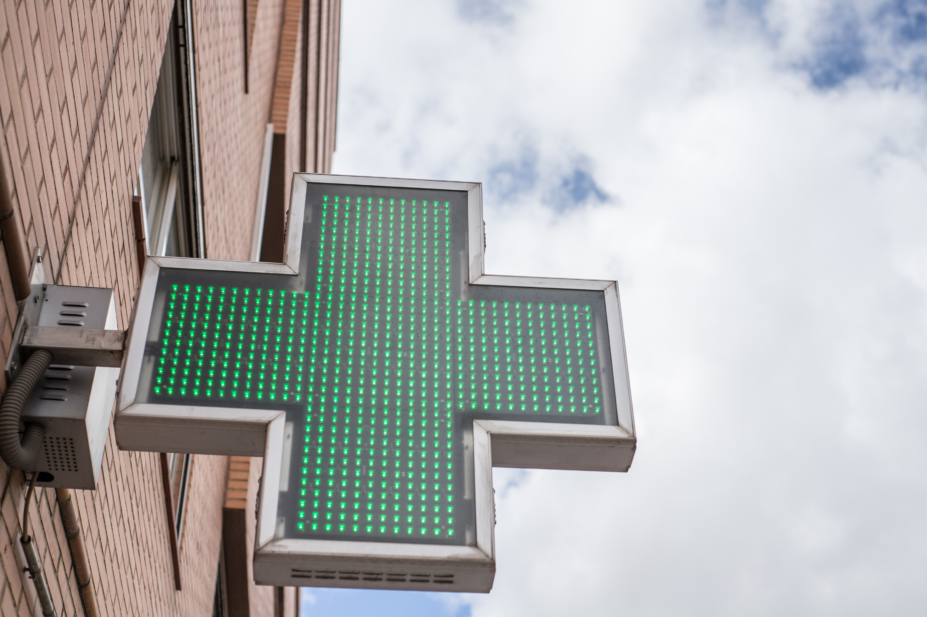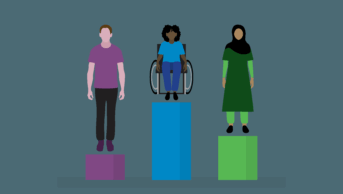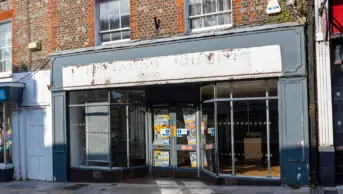
Shutterstock.com
The COVID-19 pandemic has brought into sharp focus the long-standing issue of health inequalities across the country.
A Public Health England (PHE) report from August 2020 on the disparities in the risk and outcomes from COVID-19 revealed that mortality rates from the virus in the most deprived areas “were more than double” those in the least deprived areas. Meanwhile, patients with underlying health conditions, such as diabetes mellitus, chronic lung disease and cardiovascular disease (CVD), were also found “to be at a higher risk of poor outcomes from COVID-19”.
The two trends are inexorably linked. NHS England’s ‘Long Term Plan’, which promised “reductions in inequalities” in January 2019, had warned that CVD “is the largest cause of premature mortality in deprived areas”, while “incidence and mortality rates for those with respiratory disease are higher in … areas of social deprivation”.
By the time ‘The Community Pharmacy Contractual Framework for 2019/20 to 2023/24’ was published in July 2019, NHS England had a plan to tackle the problem, using pharmacies for “case finding” undiagnosed CVD patients and taking on smoking cessation referrals from secondary care.
Community pharmacy was touted as “the first port of call for minor illness and health advice in England”.
But, using the UK government’s index of multiple deprivation to analyse NHS Digital data published on 27 November 2020, The Pharmaceutical Journal has found that these ports are closing where they are needed the most.
Of the 509 net community pharmacy closures that occurred in the five years from 2016 to 2020, 189 were in the 20% most deprived neighbourhoods in England. This is more than three times the number that occurred in the 20% most affluent areas, at 56 net closures.
“It’s disappointing to see the disproportionate number of pharmacy closures in the most deprived areas of England,” says Azeem Majeed, professor of primary care and public health at Imperial College London.
“For many people, pharmacists are an important source of advice and support on health issues. They are easily accessible for people and offer a wide range of health services,” he says.
“As well as increasing health inequalities, closing pharmacies in deprived areas will also place greater pressures on other parts of the NHS; such as general practices, urgent care centres and A&E departments.”
Yet the number of closures has spiked during a national health crisis, with a net total of 202 pharmacies closing their doors in 2020. This compares with 123 net closures in 2019, 122 in 2018 and just 25 in 2017.
Deprived areas were again hit the hardest, with 81 of those closures occurring in the 20% most deprived areas, while 19 closed in the 20% most affluent areas in 2020.
“To put it bluntly, cuts to community pharmacy budgets often mean cuts to health services for poorer people,” says Andrew Lane, chair of the National Pharmacy Association (NPA). “That’s not in the least bit compatible with the government’s levelling up agenda.”
“It is tragic to see this continuing trend play out and it’s clear that pharmacy funding must be addressed urgently,” he says. “The NPA made this point to equalities minister Kemi Badenoch earlier this month, just as we have done with other ministers and senior officials.”
The increasing rate of pharmacies closing has come at a time of unprecedented financial strain on the community pharmacy sector.
Amid warnings from the NPA that thousands of pharmacies would close without additional funding to cope with COVID-19 cost pressures, a report by Ernst & Young found that up to 85% of pharmacies in England will be in financial deficit by 2024 if the current contractual funding arrangements continue.
Under the contractual framework, which was agreed in 2019, funding for community pharmacies has been frozen at £2.592bn per year until 2023/2024 — an agreement that government officials knew would cause pharmacies to close.
However, Simon Dukes, chief executive of the Pharmaceutical Service Negotiating Committee (PSNC), says he has been negotiating with the Department of Health and Social Care (DHSC) for more money, not only to cover the costs associated with COVID-19, but also to cover contractual services in 2020/2021 and 2021/2022 to keep pharmacies afloat.
The DHSC responded to requests for more money by providing the sector with a £370m loan to cope with expenses brought about by the pandemic, although a further offer was later rejected by the PSNC in the summer of 2020, which Dukes says would still have required community pharmacies to pay back funding from the government.
“The offer that we got from the Treasury, from the Department of Health, which was saying we, the government, estimate your costs will be X and therefore you pay back Y, was not acceptable to us, because actually, we calculated that X and Y had both been accounted for,” he says.
Dukes describes the disproportionate number of closures in deprived areas as “counterintuitive” to government policy.
“If we are not going to see an uplift to core contractual framework funding, we will have more closures without a doubt,” he says.
“That will mean more communities losing their only link to the NHS, and that will therefore widen health inequalities, which is something this government has said that it wants to focus on reducing.”
Dukes adds that the PSNC is still waiting for a further response from the Treasury.
“The approach that Treasury continues to take, and the silence in response to our comprehensive funding bids, is unforgivable,” he says.
“One would hope, perhaps, that with the son of a pharmacist in number 11 Downing Street, that government would at least have some recognition of how important the network of community pharmacies is to the communities that they serve. But it really does not feel like that.”
NHS England declined to comment for this article.
Methodology
The Pharmaceutical Journal used the latest available data published by NHS Digital on pharmacy openings and closures in England published on 27 November 2020 to calculate a net figure for the community pharmacies that have permanently closed (or were planned closures for December) and opened in each of the last five years. The locations of these pharmacies were cross-referenced with the Government’s Index of Multiple Deprivation, which is the official measure of relative deprivation for small areas in England and ranks each area from 1 (most deprived) to 32,844 (least deprived area). The Government calculates deciles by dividing the ranked areas into 10 equal groups, with areas in the first two deciles, for example, considered to be the most deprived 20% of neighbourhoods. Our figures look at closures in the most deprived 20% of neighbourhoods and most affluent 20% of neighbourhoods.


